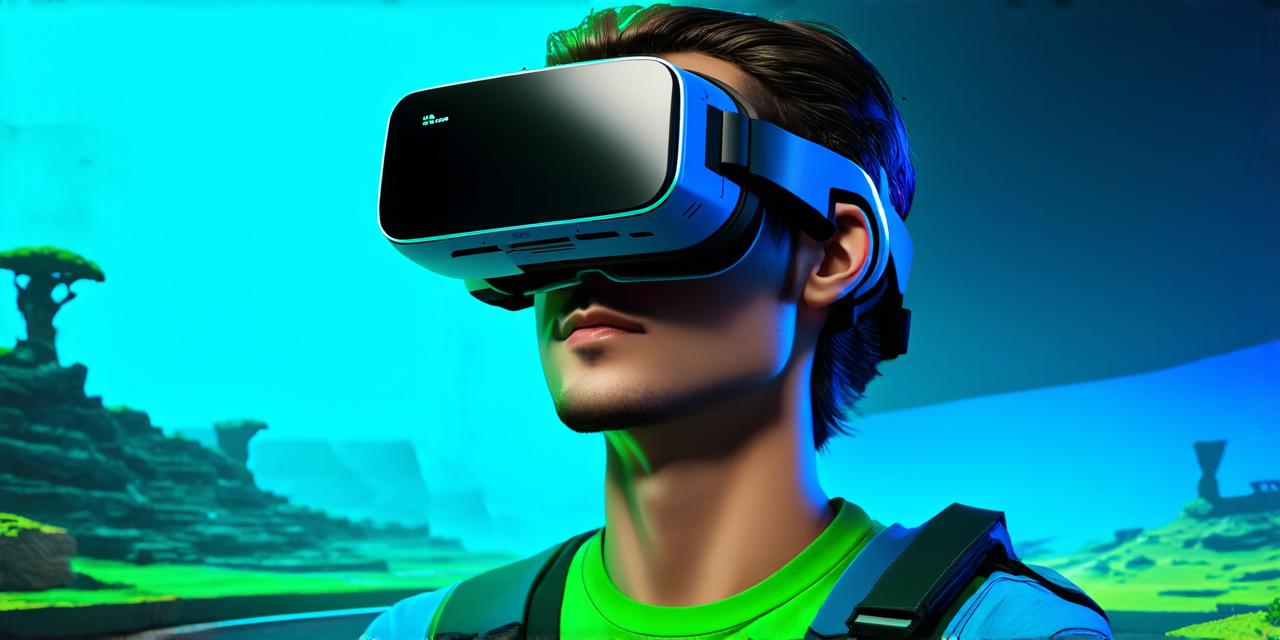Virtual reality (VR) is an immersive computer-generated simulation of a 3D environment that can be interacted with in seemingly real or physical ways using specialized electronic equipment, such as a headset or gloves equipped with sensors. In simple terms, it’s a way to experience the world through a digital lens, allowing users to interact with virtual objects and environments in a way that simulates reality.
The history of VR dates back to the 1960s when researchers at MIT first began experimenting with head-mounted displays (HMDs) as a means of creating a more realistic simulation of the real world. Since then, advancements in technology have allowed for significant improvements in the field, including the development of motion tracking systems and sophisticated graphics engines that can render highly detailed virtual environments.
Today, VR is used across a wide range of industries, from gaming to healthcare, education, and training. It’s also being explored as a tool for enhancing immersive experiences in entertainment, such as movies and concerts.
One of the key benefits of VR is its ability to transport users into virtual worlds that can be customized to suit their needs and interests. This has made it particularly appealing to developers, who are able to create highly interactive and engaging experiences for users without being limited by physical constraints.
For example, in the gaming industry, VR has allowed developers to create highly immersive experiences that allow players to feel like they are truly a part of the game world. In healthcare, VR has been used to simulate surgeries and other medical procedures, allowing doctors and nurses to practice their skills in a safe environment before performing them on real patients.
But the potential applications for VR go far beyond these two industries. It’s also being explored as a tool for enhancing training and education, as well as for improving communication and collaboration among teams working remotely.
Despite its many benefits, there are still some challenges associated with developing VR experiences. One of the biggest challenges is creating virtual environments that feel realistic and immersive. This requires a deep understanding of human perception and how it relates to the digital world. It also requires advanced graphics engines that can render highly detailed and dynamic environments in real-time.
Another challenge is designing VR experiences that are intuitive and easy to use. This requires a strong understanding of user interface design and the principles of usability. Developers must also be able to anticipate how users will interact with virtual objects and environments, and design interfaces that make it easy for them to do so.
Despite these challenges, the future of VR is bright. As technology continues to advance, we can expect to see even more exciting applications of this immersive technology. Whether it’s gaming, healthcare, education, or something else entirely, VR has the potential to revolutionize the way we interact with the digital world.
FAQs:
Q: What is virtual reality?
A: Virtual reality (VR) is an immersive computer-generated simulation of a 3D environment that can be interacted with in seemingly real or physical ways using specialized electronic equipment, such as a headset or gloves equipped with sensors.
Q: How does virtual reality work?
A: VR works by presenting users with a stereoscopic display, which creates the illusion of depth and distance by displaying two slightly different images in each eye. This is combined with motion tracking systems that track the user’s movements and adjust the virtual environment accordingly.
Q: What are some common applications of virtual reality?
A: VR has a wide range of applications across various industries, including gaming, healthcare, education, and training. It’s also being explored as a tool for enhancing immersive experiences in entertainment, such as movies and concerts.
Q: What are the challenges associated with developing virtual reality experiences?
A: The biggest challenges associated with VR include creating virtual environments that feel realistic and immersive, designing intuitive and easy-to-use interfaces, and ensuring that the technology is accessible to a wide range of users.
